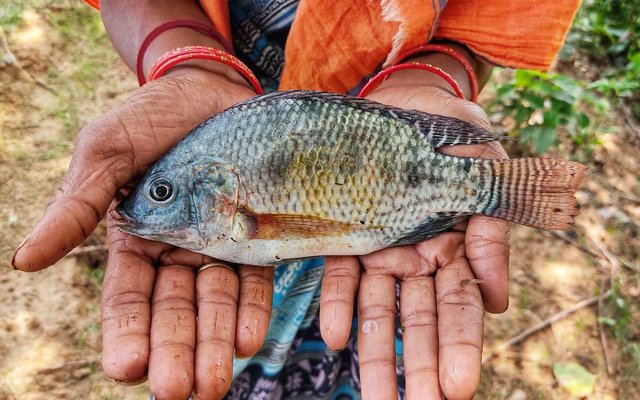The Indian government called on tilapia hatcheries to set up through public-private partnership (PPP) to expand tilapia production in the country. Fisheries Secretary Jatindra Nath Swain said that to significantly expand tilapia production in India, including the development of broodstock hatchery, infrastructure, finance, capacity building, branding and marketing as well as the extensive support of state fisheries departments to further reach out to fishers, farmers, entrepreneurs and donors is critical.
The announcement was made at an event presenting the WorldFish and Confederation of Indian Industries (CII) report, Business Case for Scaling the Production of Tilapia in India: A Report for the SCALE Committee of the Government of India, that analyzes the opportunities and what is needed to significantly expand tilapia production in India. WorldFish is seeking to build a strong program in India by strengthening research and development with partners, including the CII. The report was part of the Advancing Local Value-Add and Exports Committee’s (SCALE) work to advance the growth of the tilapia industry in India.
The Indian government has committed to a national target to increase fish production to 22 million metric tons by 2024-2025. To reach the vision, the government is providing financial support through several schemes, such as the three-year scheme for tilapia.
Tilapia production in India
In the past, there was a misconception that tilapia was a pest in Indian aquaculture due to the introduction of the wrong species – Mozambique tilapia – in 1952. The culture of this species was met with failure due to its undesirable characteristics and production of small, low-value fish at harvest. As a result, tilapia farming was banned in 1959.
With subsequent studies indicating the potential of farming Nile tilapia, the ban was lifted in 2009 and the Indian government formulated guidelines for responsible farming of the species. Under the guidelines, some private hatcheries and companies, as well as the Rajiv Gandhi Centre for Aquaculture (RGCA), were initially allowed to import commercially viable tilapia strains from overseas and set up multiplication centers and hatcheries in the country. From 2019-2020, close to 94 million fry were produced by about 11 licensed and more than 25 unauthorized tilapia hatcheries. The major strains produced by licensed hatcheries in India were GIFT, Chitralada and Golden.
While there is a steady increase in the production of tilapia in states like West Bengal, Maharashtra, Madhya Pradesh, Chhattisgarh, Bihar, Jharkhand and Kerala, the major hub for commercial aquaculture production in India, Andhra Pradesh, farms primarily Indian carps.
In 2011, RGCA – under the aegis of the Marine Products Development Authority of India (MPEDA) – collaborated with WorldFish to establish a satellite breeding program for GIFT. However, the seed produced was minimal and not able to meet the demand of even a small number of farmers.
“If India is to attain its potential in terms of increasing production and exports through the farming of tilapia, there is a need to establish brood banks, multiplication centers, licensed hatcheries and nurseries, among others. There is also a need to establish breeding programs for strains other than GIFT for faster and sustained scaling,” said WorldFish's former assistant director general, Modadugu Vijay Gupta, in an op-ed as a summary of the event's proceedings. “Timely interventions by the government of India in terms of creating awareness of the benefits of farming and consuming tilapia, along with appropriate policy changes and financial incentives to farmers and entrepreneurs would, undoubtedly, accelerate the growth of tilapia production in India, leading to increased domestic consumption and overseas exports, in addition to generating employment for the local people.”













